Book Cover
Title
Copyright
Contents
Helping you to pass
BPP Learning Media – Approved Content Provider
The PER alert!
Tackling studying
Developing exam awareness
Using the Syllabus and Study Guide
Testing what you can do
Chapter features
Studying FAB/F1
How to Use this Interactive Text
What FAB/F1 is about
Brought forward knowledge
Approach to examining the syllabus
The Computer-Based Examination
Tackling Multiple Choice Questions
Part A The business organisation, its stakeholders and the external environment
Chapter 1 Business organisations and their stakeholders
1 Purpose of business organisations
1.1 What all organisations have in common
1.2 Why do organisations exist?
1.3 How organisations differ
1.4 What the organisation does
2 Types of business organisation
2.1 Profit vs not-for-profit orientation
2.2 Private vs public sector
2.3 Private sector commercial business organisations
2.3.1 Legal status
2.3.2 Limited companies
2.3.3 Types of limited company
2.3.4 Advantages and disadvantages of limited companies
2.4 The public sector
2.4.1 Key characteristics of the public sector
2.4.2 Advantages
2.4.3 Disadvantages
2.5 Non-governmental organisations
2.6 Co-operative societies and mutual associations
3 Stakeholder goals and objectives
3.1 Internal stakeholders: employees and management
3.2 Connected stakeholders
3.3 External stakeholders
3.4 Another approach
3.5 Stakeholder conflict
3.6 Stakeholder mapping: power and interest
3.7 The strategic value of stakeholders
3.8 Measuring stakeholder satisfaction
Chapter Roundup
Quick Quiz
Answers to Quick Quiz
Chapter 2 The business environment
1 Analysing the business environment
1.1 The changing environment
2 The political and legal environment
2.1 The political and legal environment
2.2 The impact of government
2.3 Influencing government
2.4 Political risk and political change
2.5 International trade
2.6 The European Union
2.7 International trade liberalisation: the World Trade Organisation (WTO)
3 Employment protection
3.1 Retirement
3.2 Resignation
3.3 Dismissal
3.4 Wrongful dismissal
3.5 Unfair dismissal
3.6 Disciplinary procedures
3.7 Redundancy
3.7.1 Procedure for handling redundancies
3.8 Equal opportunities
4 Data protection and security
4.1 Why is privacy an important issue?
4.2 The Data Protection Act 1998
4.3 Definitions of terms used in the Act
4.4 The data protection principles
4.4.1 The rights of data subjects
5 Health and safety
5.1 Importance of maintaining health and safety at work
5.2 Employers' duties
5.3 Employee duties
5.4 Accident and safety policies
5.5 Health and safety policy
6 Consumer protection
6.1 What is a contract?
6.2 Sale of goods and services
6.2.1 Implied terms
6.2.2 Time of performance
6.2.3 Seller's title
6.2.4 Example: Seller's title
6.2.5 Goods to correspond with contract description
6.2.6 Example: Sale by description
6.2.7 Satisfactory quality
6.2.8 Fitness of goods for a disclosed purpose
7 Social and demographic trends
7.1 Population and the labour market
7.2 Implications for employers
7.3 Family life cycle
7.4 Social structures and class
7.5 Socio-economic position, income and wealth
7.6 Socio-economic status
7.7 Buying patterns
8 Cultural trends
8.1 Health and diet issues
8.2 Impact of health and diet on businesses
8.3 Women in work
8.4 Environmentalism
8.5 The business response
9 The impact of technology on organisations
9.1 Organisation structure
9.1.1 Span of control
9.1.2 Tall and flat organisations
9.1.3 Organisation structure and information systems
9.2 Other effects of IT on organisations
9.2.1 Routine processing
9.2.2 Digital information and recordkeeping
9.2.3 Employment issues
9.2.4 Technological change
9.2.5 Customer service
9.2.6 Information markets
9.2.7 Developments in communications
9.3 IT and the employee/employer relationship
9.4 Homeworking and supervision
9.5 Outsourcing
9.5.1 Types of outsourcing
9.5.2 The advantages and disadvantages of outsourcing
10 Environmental factors
10.1 Significance of environmental effects
10.2 Impact on environment of economic activities
10.3 Impact on organisation of environmental costs
10.4 Social impacts of activities
10.4.1 Stakeholder expectations
10.4.2 Reputation risk
10.5 Corporate social responsibility and risk management
11 Competitive forces
11.1 SWOT analysis
11.1.1 Internal appraisal: strengths and weaknesses
11.1.2 External appraisal: opportunities and threats
11.2 Using a SWOT analysis
12 Converting resources: the value chain
12.1 Value activities
12.2 Example
12.3 The value chain
12.4 Value network
13 Competitive advantage – Porter's five forces model
13.1 The threat of new entrants (and barriers to entry to keep them out)
13.2 The threat from substitute products
13.3 The bargaining power of customers
13.4 The bargaining power of suppliers
13.5 The rivalry amongst current competitors in the industry
Chapter Roundup
Quick Quiz
Answers to Quick Quiz
Chapter 3 policy The macroeconomictconcentratingonfiscalpolicyandmonetarypolicy. environment
1 The structure and objectives of the economy
1.1 Income and expenditure flows
1.2 Withdrawals and injections into the circular flow of income
2 Factors which affect the economy
2.1 The multiplier in the national economy
2.2 Aggregate supply and demand
2.2.1 Aggregate demand
2.2.2 Aggregate supply
2.2.3 A shift in aggregate demand
3 The determination of national income
3.1 Aggregate demand and supply equilibrium
3.2 Full-employment national income
3.3 Inflationary gaps
3.4 Example
3.5 Deflationary gap
3.6 Stagflation
3.7 Summary
4 The business cycle
4.1 Phases in the business cycle
4.2 Diagrammatic explanation
5 Inflation and its consequences
5.1 Inflation
5.2 Why is inflation a problem?
5.2.1 Redistribution of income and wealth
5.2.2 Balance of payments effects
5.2.3 Uncertainty of the value of money and prices
5.2.4 Resource costs of changing prices
5.2.5 Economic growth and investment
5.3 Consumer price indices
5.3.1 The RPI and the CPI
5.3.2 The underlying rate of inflation
5.4 Causes of inflation
5.4.1 Demand pull inflation
5.4.2 Cost push inflation
5.4.3 Import cost factors
5.4.4 Expectations and inflation
5.4.5 Money supply growth
6 Unemployment
6.1 The rate of unemployment
6.2 Consequences of unemployment
6.3 Causes of unemployment
6.4 Government employment policies
7 The objective of economic growth
7.1 Economic growth
7.2 Actual growth
7.3 Potential growth
7.4 Factors needed for sustained economic growth
7.5 Natural resources
7.6 Technological progress
7.7 External trade influences on economic growth
7.8 Advantages and disadvantages of economic growth
8 Government policies for managing the economy
8.1 Government spending
8.2 Significance of government tax and spending decisions to companies
8.3 Economic planning
8.4 State influences over organisations
8.5 Government influence over commercial decisions
8.6 Government influence over operational decisions
9 Fiscal policy
9.1 Fiscal policy and the Budget
9.2 Budget surplus and budget deficit
9.3 Functions of taxation
9.4 Direct and indirect taxes
9.5 Tax and income levels
10 Monetary policy
10.1 Objectives of monetary policy
10.2 The money supply as a target of monetary policy
10.3 Interest rates as a target for monetary policy
10.4 The exchange rate as a target of monetary policy
10.5 Targets and indicators
10.6 Monetary policy and fiscal policy
10.7 Monetary policy, inflation control and economic growth
11 The balance of payments
11.1 The nature of the balance of payments
11.2 Equilibrium in the balance of payments
11.3 Surplus or deficit in the current account
11.4 How can a government rectify a current account deficit?
Chapter Roundup
Quick Quiz
Answers to Quick Quiz
Chapter 4 Microeconomic factors
1 The micro environment
1.1 Supply and demand
2 Internal and external micro and macro environments
3 The concept of a market
3.1 What is a market?
3.2 Price theory and the market
3.3 Utility
3.4 Assumptions about consumer rationality
4 The demand schedule
4.1 The concept of demand
4.2 The demand schedule and the demand curve
4.3 The market demand curve
4.4 Substitutes and complements
4.5 The price elasticity of demand
4.6 Example: arc elasticity of demand
4.7 Example: point elasticity of demand
4.8 Income elasticity of demand
4.9 Cross elasticity of demand
4.10 Household income and demand: normal goods and inferior goods
4.11 Market demand and the distribution of income
4.12 Shifts of the demand curve
4.13 Demand, fashion and expectations
5 The supply schedule
5.1 The concept of supply
5.2 The supply curve
5.3 Short run supply curve
5.4 Long run supply curve
5.5 Factors influencing the supply quantity
5.6 Shifts of the market supply curve
6 The equilibrium price
6.1 Functions of the price mechanism
6.2 The price mechanism and the equilibrium price
6.3 Consumer surplus and producer surplus
7 Demand and supply analysis
7.1 Case example
7.2 Analysis
7.3 Price as a signal
8 Maximum and minimum prices
8.1 Price regulation
8.2 Maximum prices
8.3 Minimum prices
8.4 Minimum wages
9 Competition and restrictive practices
9.1 Types of competition
9.2 Restrictive practices
Chapter Roundup
Quick Quiz
Answers to Quick Quiz
Part B Business organisation structure, functions and governance
Chapter 5 Business organisation, structure and strategy
1 The informal organisation
1.1 What is the 'informal organisation'?
1.2 Benefits (or the role of) the informal organisation
1.3 Managerial problems of informal organisation
1.4 Group norms
1.4.1 The Hawthorne Studies
2 Organisational structure
2.1 Components of the organisation (Mintzberg)
2.2 Functional departmentation
2.3 Geographic departmentation
2.4 Product / brand departmentation
2.5 Customer departmentation
2.6 Divisionalisation
2.7 Hybrid structures
2.8 The simple structure (or entrepreneurial structure)
2.9 Matrix and project organisation
2.10 The new organisation
2.11 The shamrock organisation
2.12 Span of control
2.13 Tall and flat organisations
2.14 Delayering
2.15 Outsourcing and offshoring
2.16 Shared services approach
3 Levels of strategy in the organisation
3.1 Corporate strategies
3.2 Business strategy
3.3 Functional/operational strategies
3.4 The Anthony hierarchy
4 Centralisation and decentralisation
4.1 What is centralisation?
4.2 Advantages and disadvantages of centralisation
Chapter Roundup
Quick Quiz
Answers to Quick Quiz
Chapter 6 Organisational culture and committees
1 Organisational departments and functions
1.1 Research and development
1.1.1 Product and process research
1.2 Purchasing
1.2.1 Importance of purchasing
1.2.2 The purchasing mix
1.2.3 Purchasing and profits
1.3 Production
1.3.1 Production management decisions
1.3.2 Relationships with other functions
1.4 Service operations
1.4.1 The nature of services
1.4.2 Implications of service provision
1.5 Marketing
1.5.1 Models of marketing
1.5.2 Marketing strategy and corporate strategy
1.5.3 Marketing orientation
1.5.4 Satisfying customer needs: the marketing mix
1.5.5 The ideal marketing mix
1.5.6 Market segmentation
1.6 Administration
1.6.1 Advantages of a centralised administration office
1.6.2 Disadvantages of a centralised administration office
1.7 The finance function
1.7.1 The importance of finance and finance management
1.7.2 Raising money: sources of finance
1.7.3 Financial accounting
1.7.4 Treasury management
1.7.5 Working capital and other matters
1.7.6 Management accounting information
1.7.7 Co-ordination with other departments
1.7.8 The finance department and strategic planning
1.8 Human resources
1.8.1 Scope of human resource management
1.8.2 Why is HRM important?
1.8.3 The human resource cycle
1.8.4 The HR plan
1.8.5 Control over the HR plan
2 What is culture?
2.1 Spheres of culture
2.2 Elements of culture
3 Organisation culture
3.1 Manifestations of culture in organisations
3.2 What shapes organisation culture?
4 Culture and structure
4.1 Power culture
4.2 Role culture
4.3 Task culture
4.4 Person culture
4.5 A contingency approach
4.6 The impact of national culture
4.7 The Hofstede model
5 Committees
5.1 Purposes of committees
5.1.1 The committee Chair
5.1.2 The committee secretary
5.2 Types of committee
5.3 Advantages of committees
5.4 Disadvantages of committees
5.5 Using committees successfully
Chapter Roundup
Quick Quiz
Answers to Quick Quiz
Chapter 7 Corporate governance and social responsibility
1 Principles of corporate governance
1.1 What is corporate governance?
1.2 Definitions
1.2.1 Integrity
1.2.2 Accountability
1.2.3 Independence
1.2.4 Good management
1.3 Perspectives on governance }
1.3.1 The agency concept
1.3.2 Stewardship theory
1.3.3 Agency theory
1.3.4 Stakeholder theory
1.4 Governance principles
1.5 Principles vs rules
2 Developments in corporate governance
2.1 The driving forces of governance development
2.2 Features of poor corporate governance
2.2.1 Domination by a single individual
2.2.2 Lack of involvement of board
2.2.3 Lack of adequate control function
2.2.4 Lack of supervision
2.2.5 Lack of independent scrutiny
2.2.6 Lack of contact with shareholders
2.2.7 Emphasis on short-term profitability
2.2.8 Misleading accounts and information
2.3 Risks of poor corporate governance
2.4 Reports on corporate governance
2.4.1 US
3 Role of the board
3.1 Scope of role
3.2 Role of company secretary
3.3 Attributes of directors
3.3.1 Nomination committee
3.4 Possession of necessary information
3.5 Performance of board
3.6 Increased accountability and responsibility
3.7 Division of responsibilities
3.8 Non-executive directors
3.8.1 Role of non-executive directors
3.8.2 Benefits of effective non-executive directors
3.8.3 Problems with non-executive directors
3.8.4 Number of non-executive directors
3.8.5 Independence of non-executive directors
3.9 Remuneration, nomination, audit and risk committees
3.9.1 Need for guidance
3.9.2 Remuneration committee
3.9.3 Nomination committee
3.9.4 Audit committee
3.9.5 Risk committee
4 Reporting on corporate governance
4.1 Reporting requirements
5 Corporate social responsibility
5.1 Corporate social responsibility
5.1.1 Strategies for social responsibility
5.2 Against corporate social responsibility
5.3 The stakeholder view
6 Ethics, law, governance and social responsibility
6.1 A brief recap
6.2 Interaction of ethics, law, governance and social responsibility
6.2.1 Levels of regulation
6.2.2 Effect on corporate behaviour
Chapter Roundup
Quick Quiz
Answers to Quick Quiz
Part C Accounting and reporting systems, controls and compliance
Chapter 8 The role of accounting
1 The purpose of accounting information
1.1 What is accounting?
1.2 The need for accounts
1.3 Users of financial statements and accounting information
1.3.1 Non-commercial undertakings
1.3.2 Sustainability and integrated reports
1.4 Qualities of good information
1.5 The structure of the accounting function
2 Nature, principles and scope of accounting
2.1 Financial accounting and management accounting
2.2 The application of information
2.2.1 Control and stewardship
2.3 Financial management
2.4 Auditing
2.4.1 Internal audit
2.5 Other departments and sections
3 The regulatory system
3.1 Introduction
3.2 Company law
3.3 Accounting concepts and individual judgement
3.4 UK accounting standards
3.4.1 The old UK regime
3.4.2 The current UK regime
3.4.3 Accounting standards and the law
3.5 The European Union
3.6 International Accounting Standards Board
3.6.1 The use and application of International Financial Reporting Standards (IFRSs)
3.7 Generally Accepted Accounting Practice (GAAP)
3.8 True and fair view
3.8.1 True and fair 'override'
4 Internal and external financial information
4.1 External reports
4.2 The profit or loss account
4.3 The statement of financial position
4.4 The statement of cash flows
4.5 Internal reports
4.6 Cost schedules
4.7 Budgets
4.8 Variance reports
5 Control over business transactions
5.1 Office organisation
5.1.1 Purchasing
5.1.2 Human resources
5.1.3 Finance
5.1.4 Sales and marketing
5.1.5 General administration
5.2 Policies
5.3 Business transactions
5.3.1 Sales
5.3.2 Purchases
5.3.3 Overheads
5.3.4 Payroll
5.3.5 Capital expenditure
5.4 Control over transactions
5.5 Financial control procedures
6 The main business financial systems
6.1 Controlling the payroll system
6.1.1 Data held on a payroll file
6.1.2 Inputs to a payroll system
6.1.3 Processing in a payroll system
6.1.4 Outputs from a payroll system
6.1.5 Controls
6.2 The purchases and sales cycles
6.2.1 Purchase and sales systems
6.2.2 Payables ledger system
6.2.3 Controls
6.3 Controlling the sales cycle
6.3.1 Receivables ledger system
6.3.2 Controls
6.4 Controlling cash
6.4.1 Control over receipts
6.4.2 Example: control over cash receipts
6.4.3 Controls over payments
6.4.4 Example: controlling a payment
6.4.5 Authorisation
6.5 Reviewing controls
7 Manual and computerised accounting systems
7.1 Accounting packages
7.2 Manual systems vs computerised systems
7.3 Coding
7.3.1 Example: coding
7.4 Modules and accounting packages
7.5 Integrated software
7.5.1 Advantages
7.5.2 Disadvantages
8 Databases and spreadsheets
8.1 Objectives of a database
8.2 Example: Non-current assets and databases
8.3 Spreadsheets
8.4 The use of spreadsheets
Chapter Roundup
Quick Quiz
Answers to Quick Quiz
Chapter 9 Control, security and audit
1 Internal control systems
1.1 Direction of control systems
1.2 Turnbull guidelines
1.3 Need for control framework
1.4 Control environment and control procedures
2 Internal control environment and procedures
2.1 Nature of control environment
2.2 Classification of control procedures
2.2.1 Other classifications
2.3 Types of financial control procedure
2.4 Internal checks
2.5 Aims of internal checks
2.6 Characteristics of a good internal control system
2.7 Limitations on the effectiveness of internal controls
3 Internal audit and internal control
3.1 Internal audit
3.2 The need for internal audit
3.3 Objectives of internal audit
3.4 Internal audit and risk management
3.5 The features of internal audit
3.6 Types of audit
3.7 Example
3.8 Accountability
3.9 Independence
4 External audit
4.1 Differences between internal and external audit
4.2 Relationship between external and internal audit
4.3 Assessment by external auditors
5 IT systems security and safety
5.1 The responsibilities of ownership
5.2 Physical threats
5.2.1 Fire
5.2.2 Water
5.2.3 Weather
5.2.4 Lightning
5.2.5 Terrorist activity
5.2.6 Accidental damage
5.3 Physical access controls
6 Building controls into an information system
6.1 Security controls
6.2 Integrity controls
6.2.1 Input controls
6.2.2 Processing controls
6.2.3 Output controls
6.2.4 Back-up controls
6.2.5 Archiving
6.2.6 Passwords and logical access systems
6.2.7 Administrative controls
6.2.8 Audit trail
6.2.9 Systems integrity with a PC
6.2.10 Systems integrity with a LAN
6.2.11 Systems integrity with a WAN
6.3 Contingency controls
6.3.1 Disaster recovery plan
6.3.2 Contents of a disaster recovery plan
Chapter Roundup
Quick Quiz
Answers to Quick Quiz
Chapter 10 Identifying and preventing fraud
1 What is fraud?
1.1 Removal of funds or assets from a business
1.1.1 Theft of cash
1.1.2 Theft of inventory
1.1.3 Payroll fraud
1.1.4 Teeming and lading
1.1.5 Fictitious customers
1.1.6 Collusion with customers
1.1.7 Bogus supply of goods or services
1.1.8 Paying for goods not received
1.1.9 Meeting budgets/target performance measures
1.1.10 Manipulation of bank reconciliations and cash books
1.1.11 Misuse of pension funds or other assets
1.1.12 Disposal of assets to employees
1.2 Intentional misrepresentation of the financial position of the business
1.2.1 Overvaluation of inventory
1.2.2 Irrecoverable debt policy may not be enforced
1.2.3 Fictitious sales
1.2.4 Manipulation of year-end events
1.2.5 Understating expenses
1.2.6 Manipulation of depreciation figures
2 Potential for fraud
2.1 Prerequisites for fraud
2.1.1 Dishonesty
2.1.2 Motivation
2.1.3 Opportunity
2.2 Assessing the risk of fraud
2.2.1 External factors
2.2.2 Internal factors
2.2.3 Business risks
2.2.4 Personnel risks
2.3 Potential for computer fraud
3 Implications of fraud for the organisation
3.1 Removal of funds or assets from a business
3.2 Intentional misrepresentation of the financial position of the business
3.2.1 If results are overstated
3.2.2 If results are understated
4 Systems for detecting and preventing fraud
4.1 Prioritising prevention
4.2 Reasons for fraud
4.3 Reasons for poor controls
4.4 General prevention policies
4.5 Prevention of fraud in specific business areas
4.6 Detection and prevention
4.7 Internal controls
4.8 Physical controls
4.9 Segregation of duties
4.10 Authorisation policies
4.11 Customer signatures
4.12 Using words rather than numbers
4.13 Documentation
4.14 Sequential numbering
4.15 Dates
4.16 Standard procedures
4.17 Holidays
4.18 Recruitment policies
4.19 Computer security
4.20 Manager and staff responsibilities
4.20.1 Fraud officer
4.21 Availability of information
4.22 Whistleblowing
4.23 Investigation of fraud
4.24 Evolving control systems
5 Responsibility for detecting and preventing fraud
5.1 The responsibility of directors
5.2 The role of the auditor
6 Money laundering
6.1 Risks associated with a company's products and services
6.2 The effects of regulation
6.2.1 Assessing risk – the risk-based approach
6.2.2 Assessing the customer base
6.2.3 Customer due diligence
6.2.4 Applying customer due diligence
6.2.5 Ongoing monitoring
6.2.6 Maintaining full and up-to-date records
6.3 UK Legislation
6.4 Categories of criminal offence
6.5 Penalties
6.6 Money laundering process
6.7 The role of the Financial Conduct Authority
6.8 The costs of compliance
6.9 Financial Action Task Force (FATF)
6.10 International Monetary Fund (IMF)
Chapter Roundup
Quick Quiz
Answers to Quick Quiz
Part D Leading and managing individuals and teams
Chapter 11 Leading and managing people
1 The purpose and process of management
1.1 Managing organisations
1.2 Authority, accountability and responsibility
1.3 Authority
1.4 Responsibility and accountability
1.5 Delegation
1.6 Authority and power
1.7 Power and influence
1.8 Power centres
1.8.1 Senior management
1.8.2 Middle managers
1.8.3 Interest groups
1.8.4 Departmental power
1.9 The manager's role in organising work
1.9.1 Work planning
1.9.2 Assessing where resources are most usefully allocated
1.9.3 Projects
1.9.4 Project management
2 Writers on management
2.1 Henri Fayol: five functions of management
2.2 F W Taylor: scientific management
2.3 Elton Mayo: human relations
2.3.1 Neo-human relations
2.4 Modern writers on management
2.5 Peter Drucker: the management process
2.5.1 Management tasks
2.5.2 Management processes
2.6 Mintzberg: the manager's role
3 Management and supervision
3.1 The supervisor's role
4 What is leadership?
4.1 Management and leadership
4.2 Key leadership skills
4.3 Theories of leadership
5 Leadership skills and styles
5.1 Trait or 'qualities' theories
5.2 Style theories of leadership
5.2.1 The Ashridge Management College model
5.2.2 Blake and Mouton's Managerial Grid
5.2.3 Evaluating the managerial grid
5.2.4 Limitations of style approaches
5.3 Contingency approaches to leadership
5.3.1 F E Fiedler
5.3.2 John Adair: action-centred leadership
5.3.3 Bennis: the distinction between management and leadership
5.3.4 Heifetz: dispersed leadership
5.3.5 An appraisal of contingency theory
Chapter Roundup
Quick Quiz
Answers to Quick Quiz
Chapter 12 Recruitment and selection
1 Recruitment and selection
1.1 Overview of recruitment and selection
1.2 The importance of recruitment and selection
2 Responsibility for recruitment and selection
2.1 Senior managers
2.2 The human resources department
2.3 Line managers
2.4 Recruitment consultants
2.4.1 Factors in the outsourcing decision
3 The recruitment process
3.1 A systematic approach
3.2 Job analysis, competences and job design
3.2.1 Job analysis
3.2.2 Competences
3.2.3 Job design
3.2.4 Job description
3.2.5 Role definitions
3.2.6 Person specification
3.2.7 Seven-point plan
3.3 Recruitment policy
3.4 Recruit or promote?
4 Advertising vacancies
4.1 Qualities of a good job advertisement
4.2 Contents of a job advertisement
4.3 Advertising media
4.4 Choosing
5 A systematic approach to selection
6 Selection methods in outline
6.1 A range of methods
6.2 Which method is best?
7 Interviews
7.1 Purposes of selection interviews
7.2 Preparation of the interview
7.3 Conduct of the interview
7.4 Types of interview
7.4.1 Individual interviews
7.4.2 Panel interviews
7.4.3 Selection boards
7.5 Advantages of interviews
7.6 The limitations of interviews
8 Selection testing
8.1 Types of selection test
8.1.1 Proficiency, attainment or competence tests
8.1.2 Intelligence tests
8.1.3 Aptitude tests
8.1.4 Personality tests
8.2 Limitations of testing
9 Other selection methods
9.1 Group selection methods (assessment centres)
9.1.1 Methods used in group selection
9.1.2 Advantages of group selection
9.2 Reference checking
9.2.1 Written references
9.2.2 Telephone references
10 Evaluating recruitment and selection practices
10.1 How effective are recruitment and selection?
10.2 Improving recruitment and selection procedures
Chapter Roundup
Quick Quiz
Answers to Quick Quiz
Chapter 13 Diversity and equal opportunities
1 Discrimination at work
1.1 Equal opportunities
1.1.1 Why is equal opportunities an issue?
1.1.2 Why is equal opportunity an issue for employers?
2 Equal opportunity
2.1 Applying the law
2.2 Disability discrimination
2.3 Sexual orientation and religious beliefs
2.4 Age discrimination
3 The practical implications
3.1 Formulating an effective equal opportunities policy
3.2 Recruitment and selection
3.3 Other initiatives
4 Diversity
4.1 Managing diversity
4.2 Diversity policy
Chapter Roundup
Quick Quiz
Answers to Quick Quiz
Chapter 14 Individuals, groups and teams
1 Individuals
1.1 Personality
1.1.1 Describing personality
1.1.2 Managing personality
1.2 Perception
1.2.1 Processes of perception
1.3 Attitudes
1.4 Intelligence
1.5 Role theory
2 Groups
2.1 What are groups?
2.2 Why form groups?
2.3 Formal and informal groups
2.4 Individual and group contribution
3 Teams
3.1 Strengths of teamworking
3.2 Limitations of teamworking
3.3 Organising teamwork
3.3.1 Multi-disciplinary teams
3.3.2 Multi-skilled teams
3.3.3 Virtual teams
4 Team member roles
4.1 Who should belong in the team?
4.2 Belbin: team roles
4.2.1 Nine team roles
4.2.2 A balanced team
4.3 How do people contribute?
5 Team development
5.1 Tuckman's stages of group development
6 Building a team
6.1 Team identity
6.2 Team solidarity
6.3 Commitment to shared objectives
7 Successful teams
7.1 Evaluating team effectiveness
7.2 Rewarding effective teams
Chapter Roundup
Quick Quiz
Answers to Quick Quiz
Chapter 15 Motivating individuals and groups
1 Overview of motivation
1.1 What is motivation?
1.2 Needs and goals
1.3 How useful is 'motivation' as a concept?
1.4 Theories of motivation
2 Content theories of motivation
2.1 Maslow's hierarchy of needs
2.1.1 Evaluating Maslow's theory
2.2 Herzberg's two-factor theory
2.3 Evaluating Herzberg's theory
3 Process theories of motivation
3.1 Vroom's expectancy theory
3.2 Managerial implications of process theories
4 Choosing a motivational approach
4.1 McGregor: Theory X and Theory Y
5 Rewards and incentives
5.1 Intrinsic and extrinsic factors
5.2 A reward system
5.3 Job design as a motivator
5.3.1 Micro-design
5.3.2 Job enrichment
5.3.3 Job enlargement
5.3.4 Job rotation
5.3.5 Job optimisation
5.4 Feedback as a motivator
5.5 Participation as a motivator
5.6 Inappropriate reward systems
6 Pay as a motivator
6.1 How is pay determined?
6.2 Types of reward
6.3 What do people want from pay?
6.4 Performance-related pay (PRP)
6.4.1 Evaluating PRP
6.5 Rewarding the team
6.5.1 Group bonus schemes
6.5.2 Profit-sharing schemes
6.6 Other issues
Chapter Roundup
Quick Quiz
Answers to Quick Quiz
Chapter 16 Training and development
1 The learning process
1.1 Approaches to learning theory
1.2 Lessons from learning theory
1.3 Learning styles: Honey and Mumford
1.4 The learning cycle: Kolb
1.5 Organisational learning
1.5.1 Strengths of learning organisations
2 Development and training
2.1 Factors affecting job performance
2.2 What is training and development?
2.3 Training and development strategy
2.4 Benefits of training
2.4.1 Benefits for the organisation
2.4.2 Benefits for the employee
2.5 A systematic approach to training
3 Training needs and objectives
3.1 Indicators of the need for training
3.2 Assessment for training
3.3 Formal training need analysis
3.4 Setting training objectives
3.5 Incorporating training needs into an individual development programme
3.5.1 Steps in personal development planning
4 Training methods
4.1 Off the job training
4.1.1 Evaluation of off the job training
4.2 On the job training
4.2.1 Evaluation of on the job training
4.3 Induction training
4.3.1 The purposes of induction
4.3.2 The process of induction
5 Responsibility for training and development
5.1 The trainee
5.2 The human resources (HR) department or training department
5.3 Line managers
5.4 The training manager
6 Evaluating training programmes
6.1 The five-level evaluation model
7 Development
7.1 What is development?
7.2 Approaches to development
Chapter Roundup
Quick Quiz
Answers to Quick Quiz
Chapter 17 Performance appraisal
1 Performance management and assessment
1.1 The process of performance management
2 The purpose of performance appraisal
2.1 Main components of appraisal
2.2 Specific objectives of appraisal
2.3 Why have formal appraisal?
3 The process of performance appraisal
3.1 Overview of the appraisal process
3.2 What is appraisal?
3.3 Appraisal techniques
3.4 Self-appraisals
3.5 The appraisal interview
3.5.1 Three approaches: Maier
3.6 Follow-up
4 Barriers to effective appraisal
4.1 Problems in practice
4.2 Appraisal and pay
4.3 Upward appraisal
4.4 Customer appraisal
4.5 360 degree appraisal
Chapter Roundup
Quick Quiz
Answers to Quick Quiz
Part E Personal effectiveness and communication in business
Chapter 18 Personal effectiveness and communication
1 Time management
1.1 Principles of time management
1.1.1 Goals
1.1.2 Action plans
1.1.3 Priorities
1.1.4 Urgency: do it now!
1.1.5 Organisation
1.2 Improving time management
1.3 Prioritisation
1.4 Work planning
2 The role of information technology
2.1 Modems and digital transmission
2.2 Mobile communications
2.3 Voice messaging systems
2.4 Computer bulletin boards
2.5 Videoconferencing
2.6 Electronic Data Interchange (EDI)
2.7 Deciding on a communication tool
2.8 The effect of office automation on business
2.8.1 Routine processing
2.8.2 The paperless office
2.8.3 Management information
2.8.4 Organisation structure
2.8.5 Customer service
2.8.6 Homeworking or remote working
2.9 How technology can enhance personal effectiveness
2.9.1 Intranet
2.9.2 Proprietary systems
3 Ineffectiveness at work
3.1 The main ways in which employees can be ineffective
3.2 Effects on the organisation
4 Competence frameworks and personal development
4.1 Competence frameworks
4.1.1 Advantages of competence frameworks
4.1.2 Disadvantages of competence frameworks
4.2 Coaching
4.3 Mentoring
4.4 Counselling
4.5 Benefits of counselling
4.6 The counselling process
4.7 Confidentiality
4.8 Personal development plans and objectives
4.9 A systematic approach to personal development planning
5 Conflict
5.1 How does conflict arise?
5.2 Managing your own interpersonal conflicts
5.2.1 Managing conflict in the team
5.3 A win-win approach
5.4 The limits of your ability and authority to resolve relationship issues
5.5 Formal grievance procedures
6 Communication in the workplace
6.1 Communication in the organisation
6.2 Direction of communication
6.3 Communication patterns (or networks)
6.4 Internal information
6.4.1 The accounting records
6.4.2 Other internal sources
6.5 External information
6.6 Efficient data collection
6.7 Why do organisations need information?
6.7.1 Planning
6.7.2 Controlling
6.7.3 Decision-making
6.8 The qualities of good information
6.9 Information in the organisation
6.9.1 Example
7 Formal communication processes
7.1 The communication process
7.2 Desirable qualities of a communication system in an organisation
7.3 Effective communication
8 Informal communication channels
8.1 The grapevine
8.2 The importance of informal communications
8.3 Interpersonal skills
8.3.1 Listening
8.3.2 Non-verbal communication: body language
8.4 Observation
9 Barriers to communication
9.1 General faults in the communication process
9.2 Communication difficulties at work
9.2.1 Culture
9.2.2 Categories of communication problems
9.3 Improving the communications system
9.4 Clearing up misunderstandings
10 Communication methods
10.1 Communication methods
Chapter Roundup
Quick Quiz
Answers to Quick Quiz
Part F Professional ethics in accounting and business
Chapter 19 Ethical considerations
1 Framework of rules
1.1 Development of society
1.2 A need for rules
1.3 How do the rules fit together?
1.4 Corporate governance concepts
1.4.1 Fairness
1.4.2 Openness/transparency
1.4.3 Probity/honesty
1.4.4 Responsibility
1.4.5 Accountability
1.4.6 Reputation
1.4.7 Judgement
1.4.8 Integrity
2 Management accountability
2.1 Fiduciary responsibility
2.2 Example
2.3 Business objectives and management discretion
3 The ethical environment
3.1 Ethical principles
3.2 Ethics based on consequences
3.2.1 Egoism
3.2.2 Criticisms of egoism
3.2.3 Pluralism
3.3 Ethics based on duty
3.3.1 Ethical relativism
3.3.2 Strengths of relativism
3.3.3 Criticisms of relativism
3.3.4 Ethical absolutism
3.3.5 Strengths of absolutism
3.3.6 Criticisms of absolutism
3.4 Rights and virtues
3.5 Social attitudes
3.6 Ethical problems facing managers
3.7 Social responsibility and businesses
3.8 Specific environmental responsibilities
3.9 Examples of social and ethical objectives
4 Ethics in organisations
4.1 Leadership practices and ethics
4.2 The Seven Principles of Public Life
4.3 Two approaches to managing ethics
4.3.1 Compliance-based approach
4.3.2 Integrity-based programmes
5 Accountants and ethics
5.1 Approaches to accountancy ethics
6 A code of ethics for accountants
6.1 IFAC and the ACCA
6.1.1 Fundamental principles of the ACCA Code of Ethics and Conduct
6.2 Personal qualities expected of an accountant
6.3 Professional qualities expected of an accountant
6.4 Conflicts of interest
6.5 Self-interest threat
6.5.1 Financial interests
6.5.2 Close business relationships
6.5.3 Employment with client
6.5.4 Partner on client board
6.5.5 Family and personal relationships
6.5.6 Gifts and hospitality
6.5.7 Loans and guarantees
6.5.8 Overdue fees
6.5.9 Percentage or contingent fees
6.5.10 High percentage of fees
6.5.11 Lowballing
6.5.12 Recruitment
6.6 Self-review threat
6.6.1 Recent service with an assurance client
6.6.2 General services
6.6.3 Preparing accounting records and financial statements
6.6.4 Valuation services
6.6.5 Taxation services
6.6.6 Internal audit services
6.6.7 Corporate finance
6.6.8 Other services
6.7 Advocacy threat
6.8 Familiarity threat
6.8.1 Long association of senior personnel with assurance clients
6.9 Intimidation threat
6.9.1 Actual and threatened litigation
6.9.2 Second opinions
7 Ethics in business
7.1 Businesses and ethics
7.1.1 An issue of trust
7.1.2 Corporate Responsibility Policies and Reports
8 Ethical dilemmas
8.1 Ethical dilemmas and conflicts of interest
8.2 Situations where ethical dilemmas and conflicts of interest occur
8.2.1 Ethics and contractual obligations
8.2.2 Examples of ethical tensions
8.3 Spotting an ethical dilemma
9 Resolution of ethical conflicts
9.1 Raising and dealing with ethical dilemmas
Chapter Roundup
Quick Quiz
Answers to Quick Quiz
Practice question and answer bank
Questions
Answers
Index
Review Form

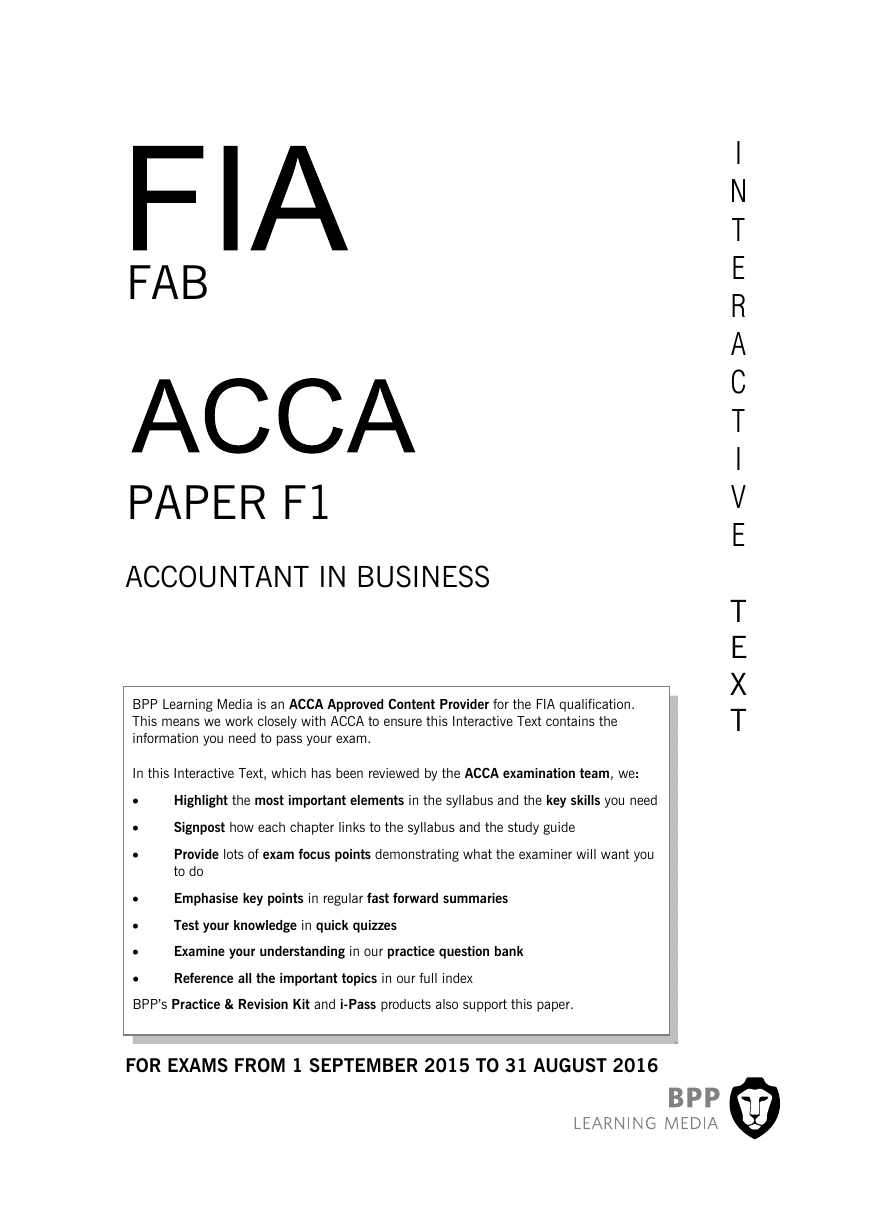
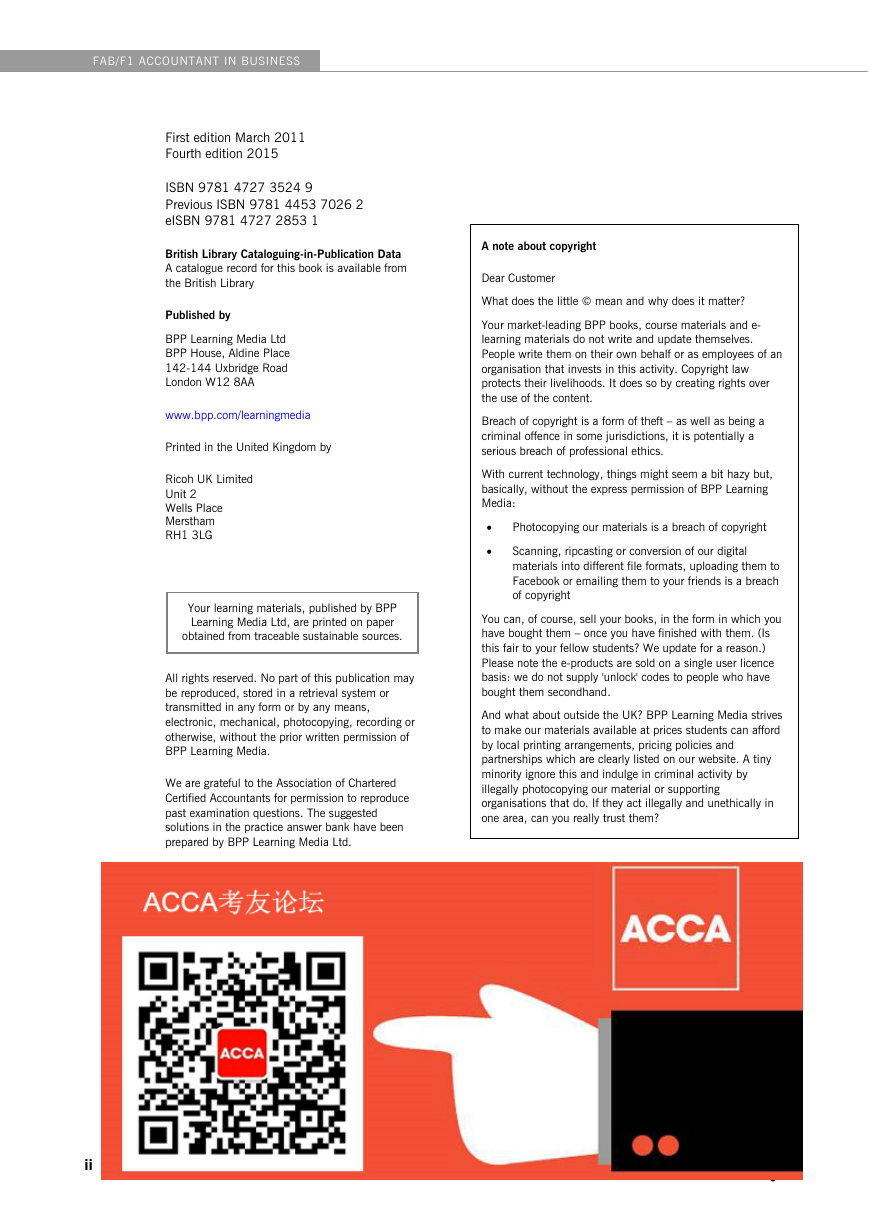
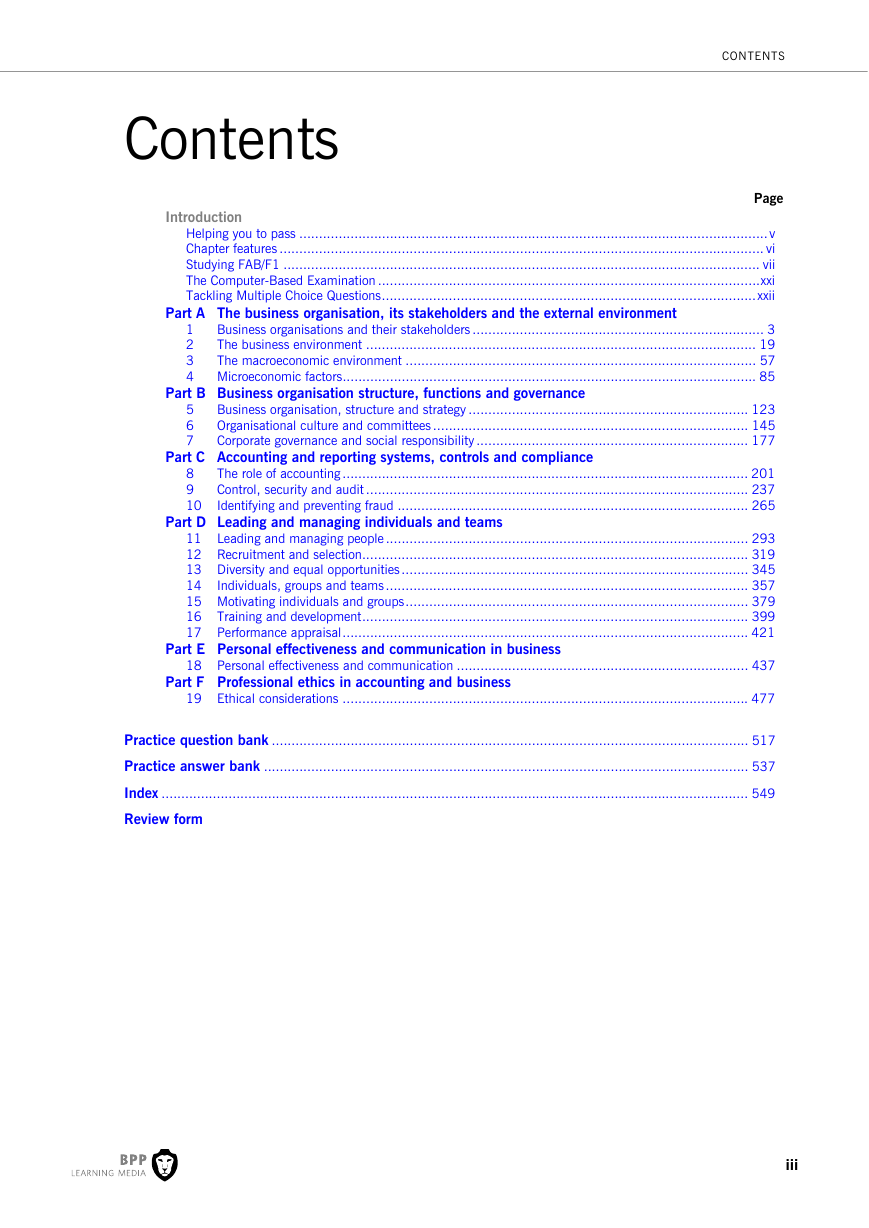

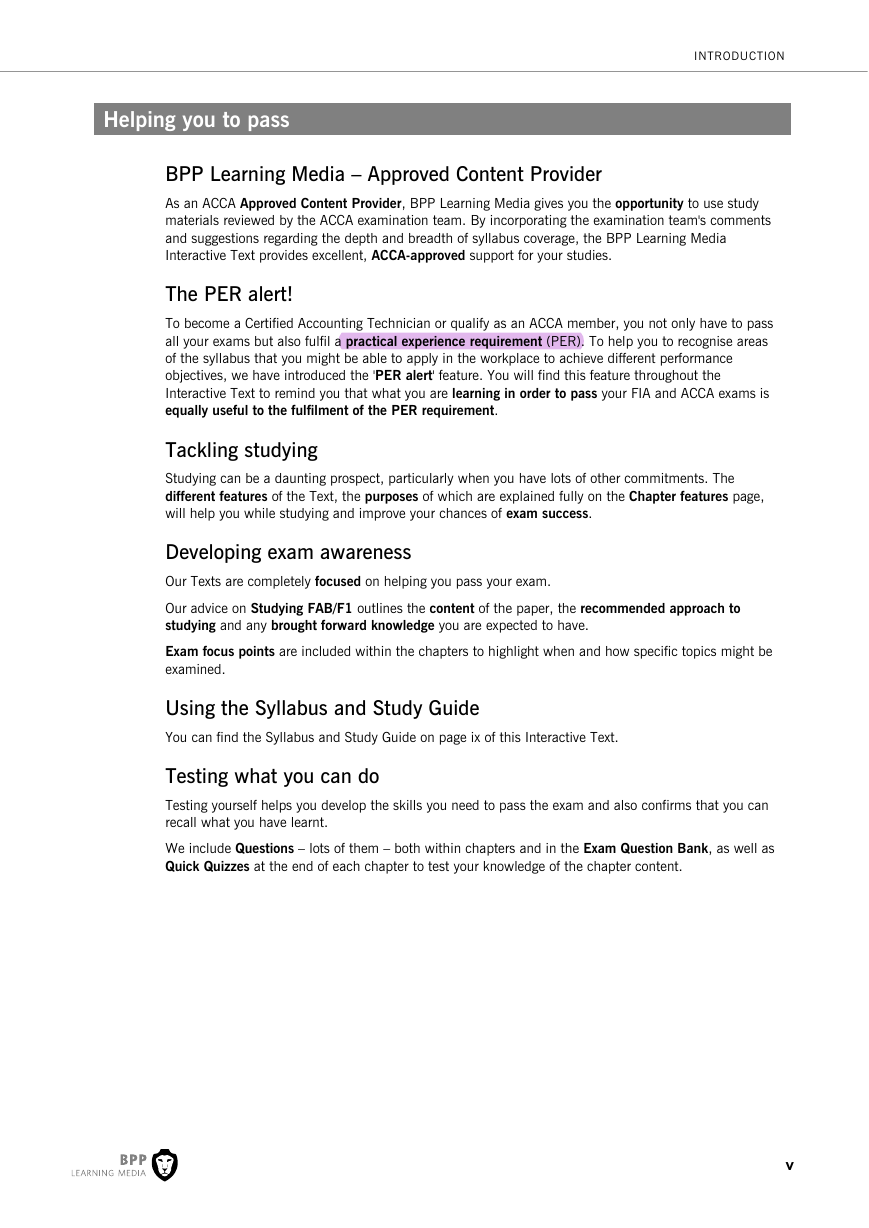
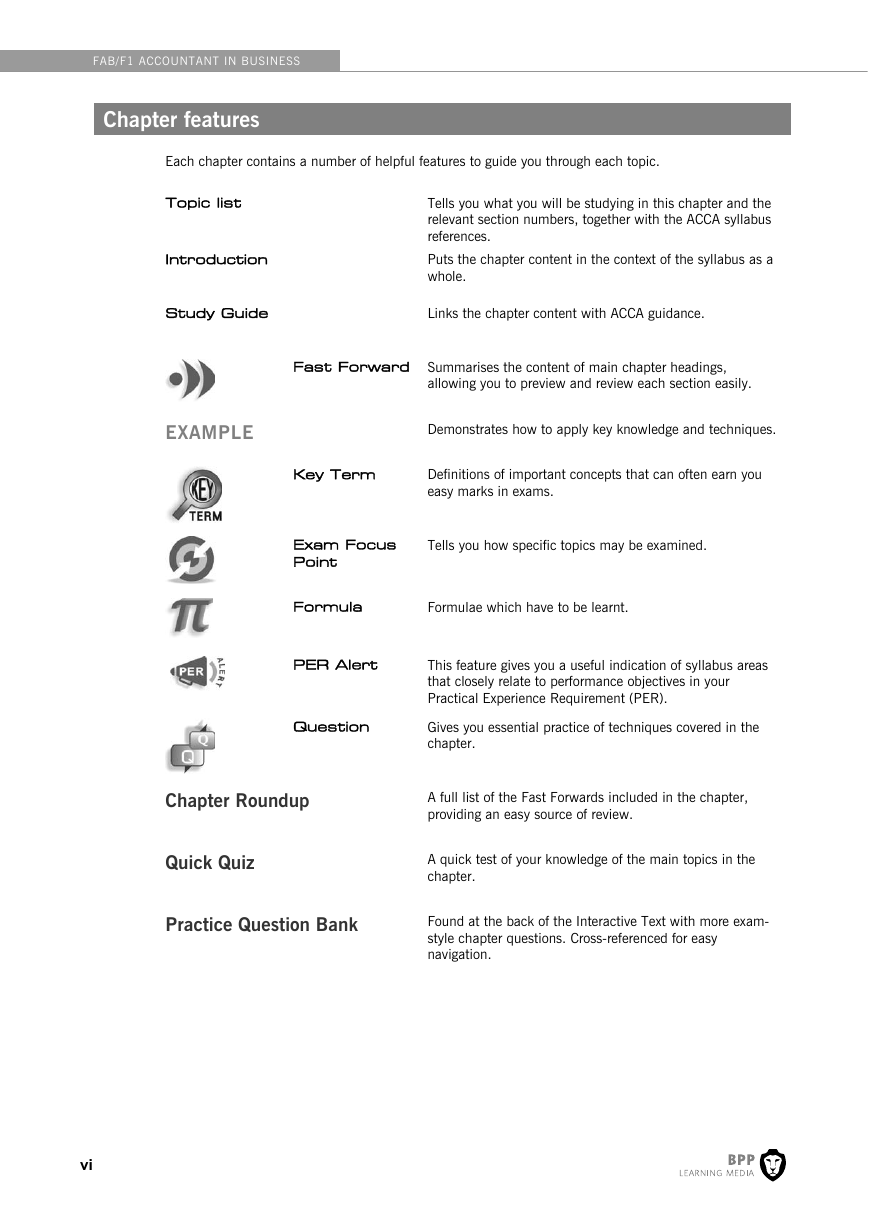
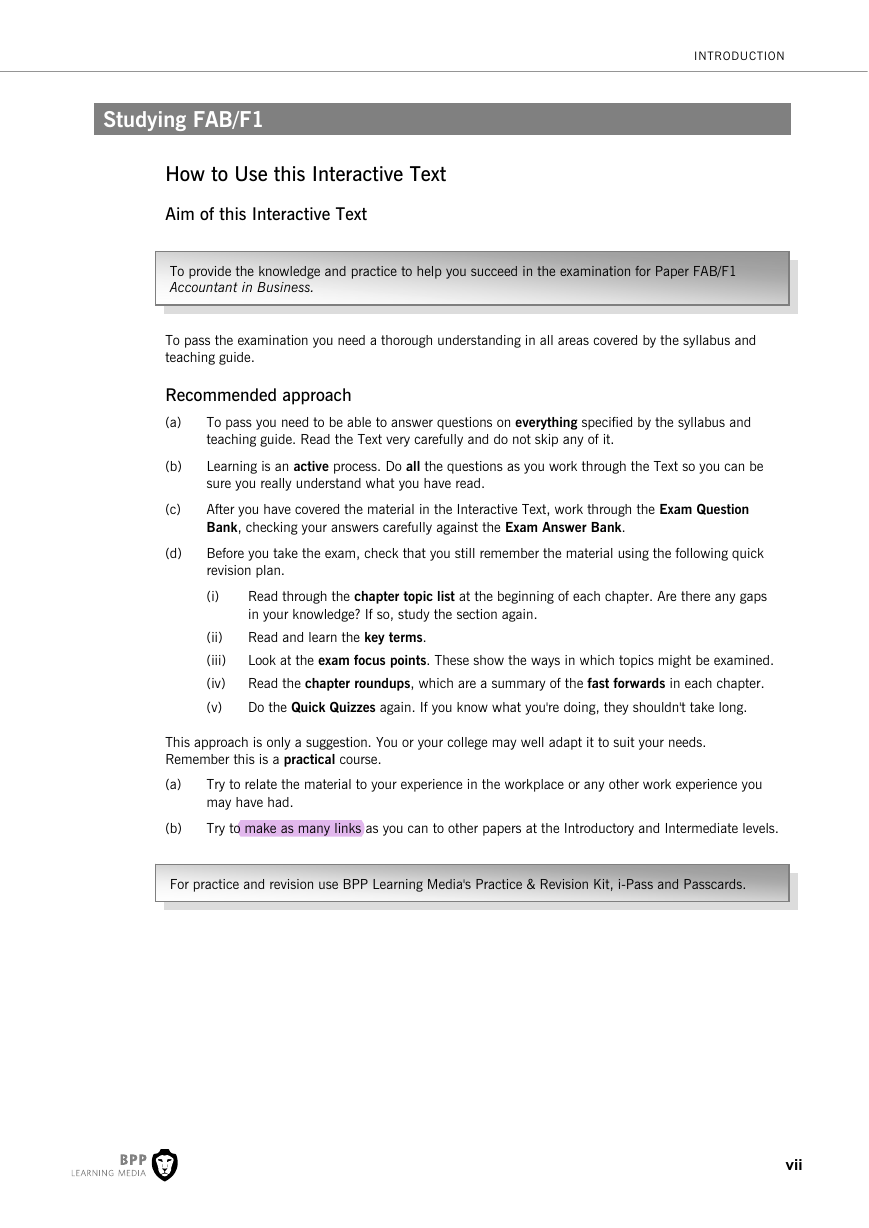








 2023年江西萍乡中考道德与法治真题及答案.doc
2023年江西萍乡中考道德与法治真题及答案.doc 2012年重庆南川中考生物真题及答案.doc
2012年重庆南川中考生物真题及答案.doc 2013年江西师范大学地理学综合及文艺理论基础考研真题.doc
2013年江西师范大学地理学综合及文艺理论基础考研真题.doc 2020年四川甘孜小升初语文真题及答案I卷.doc
2020年四川甘孜小升初语文真题及答案I卷.doc 2020年注册岩土工程师专业基础考试真题及答案.doc
2020年注册岩土工程师专业基础考试真题及答案.doc 2023-2024学年福建省厦门市九年级上学期数学月考试题及答案.doc
2023-2024学年福建省厦门市九年级上学期数学月考试题及答案.doc 2021-2022学年辽宁省沈阳市大东区九年级上学期语文期末试题及答案.doc
2021-2022学年辽宁省沈阳市大东区九年级上学期语文期末试题及答案.doc 2022-2023学年北京东城区初三第一学期物理期末试卷及答案.doc
2022-2023学年北京东城区初三第一学期物理期末试卷及答案.doc 2018上半年江西教师资格初中地理学科知识与教学能力真题及答案.doc
2018上半年江西教师资格初中地理学科知识与教学能力真题及答案.doc 2012年河北国家公务员申论考试真题及答案-省级.doc
2012年河北国家公务员申论考试真题及答案-省级.doc 2020-2021学年江苏省扬州市江都区邵樊片九年级上学期数学第一次质量检测试题及答案.doc
2020-2021学年江苏省扬州市江都区邵樊片九年级上学期数学第一次质量检测试题及答案.doc 2022下半年黑龙江教师资格证中学综合素质真题及答案.doc
2022下半年黑龙江教师资格证中学综合素质真题及答案.doc